Coffee Beans: From Farm to Cup
Exploring the Fascinating Journey of Coffee Beans: From Cultivation to Consumption
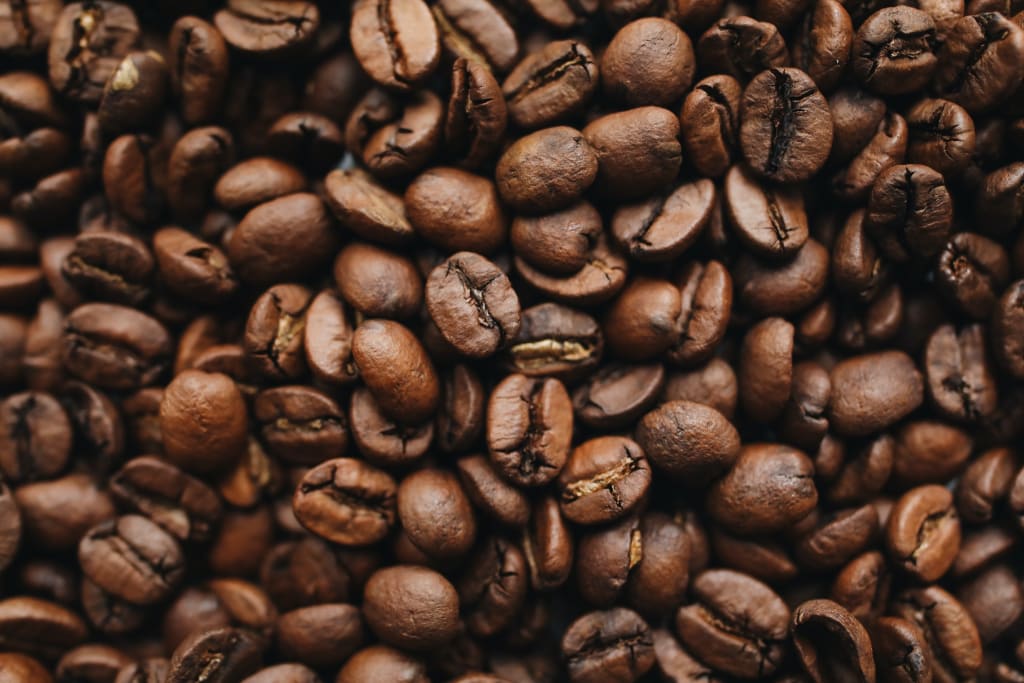
Coffee is not just a beverage, but an experience that millions of people around the world enjoy daily. The journey of coffee beans from farm to cup is a complex one, involving a range of processes and factors that contribute to the final flavor and quality of this beloved drink. In this article, we will take a detailed look at the origins and varieties of coffee beans, the methods and challenges of coffee farming and harvesting, the intricacies of processing and roasting, and the various ways to brew and enjoy coffee. Additionally, we will explore sustainability and ethical considerations within the coffee industry.
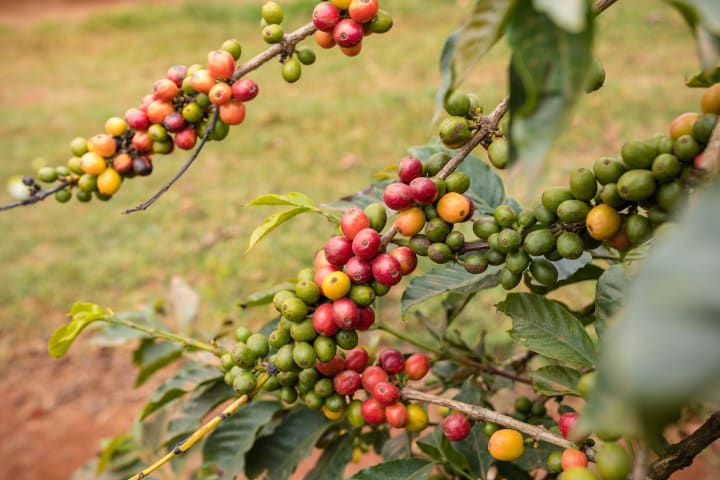
The Origins and Varieties of Coffee Beans: Coffee cultivation has evolved over the centuries, with advancements in breeding and growing techniques leading to the development of various coffee varieties. Today, there are over 100 recognized coffee species, with Arabica and Robusta being the most widely consumed.
Arabica beans are typically grown at higher elevations, with cooler temperatures and lower levels of sunlight. They are known for their complex flavors, floral aromas, and lower caffeine content. Arabica beans are more delicate than Robusta beans, making them more vulnerable to pests and diseases. As a result, Arabica coffee is often more expensive and considered a higher quality bean.
Robusta beans, on the other hand, are typically grown at lower elevations, with warmer temperatures and higher levels of sunlight. They are known for their strong, earthy flavor, higher caffeine content, and higher yields. Robusta beans are hardier than Arabica beans, making them easier to cultivate and more resistant to pests and diseases. However, their higher caffeine content can result in a more bitter flavor profile.
In addition to Arabica and Robusta, there are many other varieties of coffee beans, each with unique flavors and characteristics. Some popular varieties include Bourbon, Typica, and Catuai.
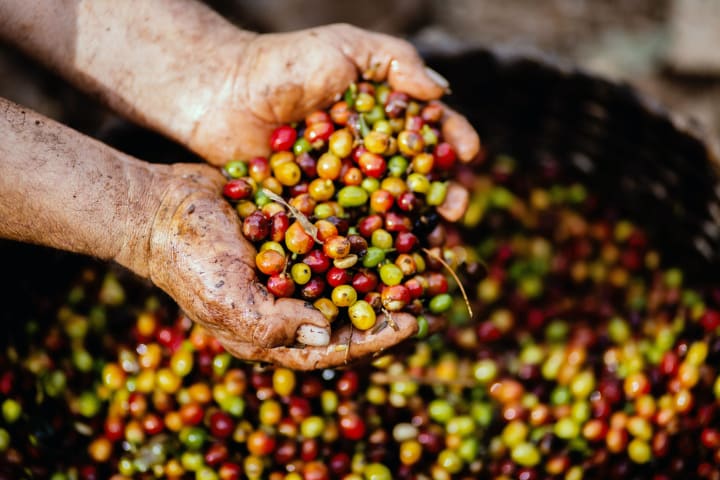
Coffee Farming and Harvesting: Coffee farming is a labor-intensive process that involves planting, pruning, fertilizing, and pest control. Coffee plants require specific conditions to thrive, including high altitudes, ample rainfall, and well-drained soils. Farmers must carefully manage their crops to ensure optimal growth and yield.
The coffee harvest season varies depending on the region, with some areas having one or two harvests per year, while others have a continuous harvest. Harvesting is typically done by hand, with skilled workers selecting only the ripest cherries. This selective harvesting results in higher quality beans, as only the ripe cherries produce the best-tasting coffee.
Once harvested, the coffee cherries undergo processing to remove the outer layers and extract the beans. There are two main methods of processing: the dry method and the wet method.
The dry method involves laying out the coffee cherries in the sun to dry, typically on raised beds or patios. This process can take up to two weeks, and requires frequent raking and turning of the cherries to ensure even drying. Once dry, the outer layers are removed, and the beans are sorted and graded for quality.
The wet method involves removing the pulp and skin of the cherries mechanically, followed by a fermentation process to loosen the mucilage surrounding the beans. The beans are then washed and dried before being sorted and graded. The wet method results in a cleaner, brighter flavor profile, but is more resource-intensive than the dry method.
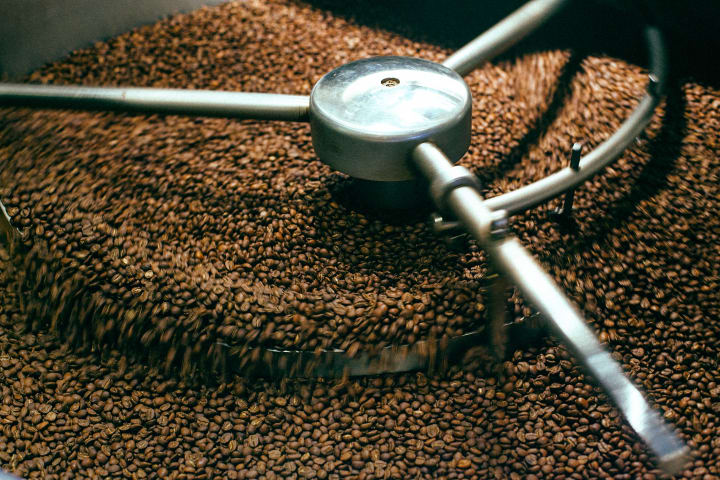
Processing and Roasting Coffee Beans: After processing, the coffee beans are sorted by size and quality before being roasted. Roasting is a critical step that affects the flavor and aroma of the coffee. Roasters carefully monitor the temperature and duration of the roasting process to achieve the desired profile.
Roasting involves heating the beans to high temperatures, causing chemical changes that create the flavors and aromas we associate with coffee. The roasting process can vary depending on the type of coffee and the desired flavor profile, but typically involves three stages: drying, browning, and development.
Drying is the initial stage of roasting, where the beans are heated to remove any remaining moisture. During the browning stage, the beans undergo a chemical reaction called the Maillard reaction, which creates the characteristic brown color and caramelized flavors of roasted coffee. Finally, during the development stage, the beans are heated to higher temperatures, causing the internal structure of the bean to break down and creating the desired flavors and aromas.
Roasters must carefully consider the desired flavor profile when selecting the roast level for the beans. Lighter roasts typically have a more acidic and complex flavor, while darker roasts have a more robust and bitter flavor. Medium roasts offer a balance between the two, with a fuller body and smoother flavor.
In addition to the roast level, the origin of the beans and the growing conditions can also impact the flavor and aroma of the coffee. For example, beans grown in volcanic soils may have a more complex flavor profile, while beans grown in high altitude regions may have a brighter acidity.
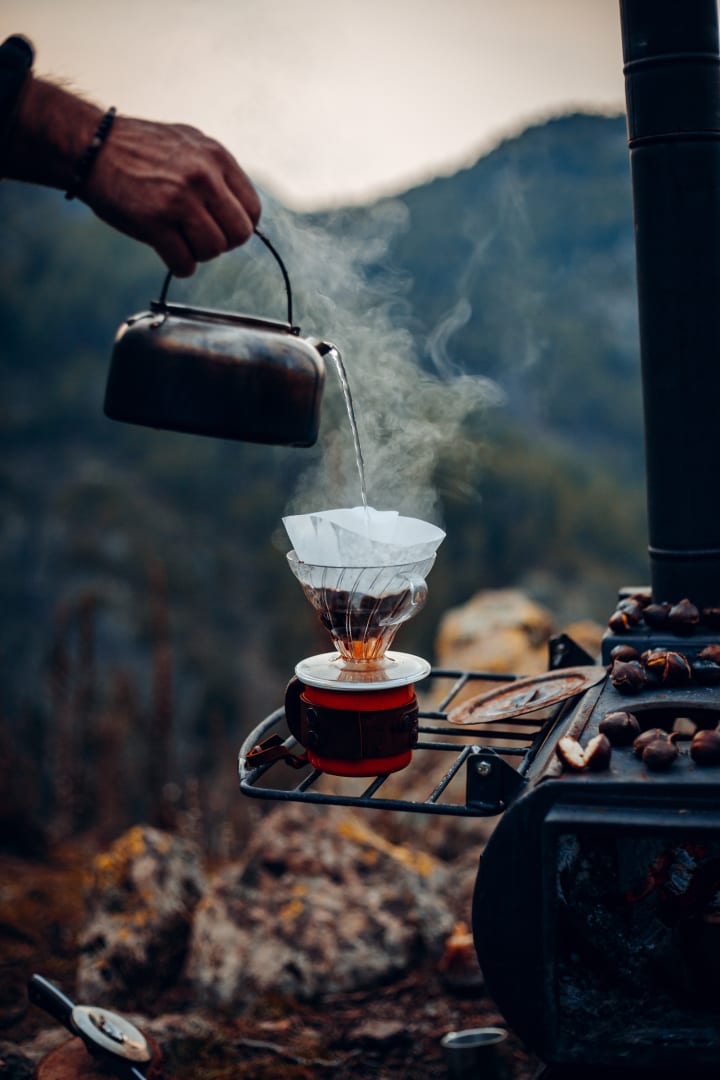
Brewing and Enjoying Coffee: There are many ways to brew and enjoy coffee, each with its own unique flavor and aroma. Some popular brewing methods include drip brewing, French press, espresso, and cold brew.
Drip brewing is perhaps the most common method of brewing coffee, using a filter to extract the coffee flavor from the ground beans. French press, on the other hand, uses a plunger to press the grounds to the bottom of the container, resulting in a richer, more full-bodied flavor.
Espresso is a concentrated form of coffee, made by forcing hot water through finely ground coffee beans at high pressure. Espresso is typically served in small, concentrated shots and is the foundation for many popular coffee drinks, such as cappuccinos and lattes.
Cold brew is a method of brewing coffee using cold water over an extended period, resulting in a smooth, less acidic flavor. This method is becoming increasingly popular, particularly during the summer months.
In addition to the brewing method, the type of coffee bean and the roast level can also impact the flavor and aroma of the coffee. To fully appreciate the complexity and nuances of different coffees, many coffee enthusiasts prefer to taste the coffee black, without any added milk or sweeteners.
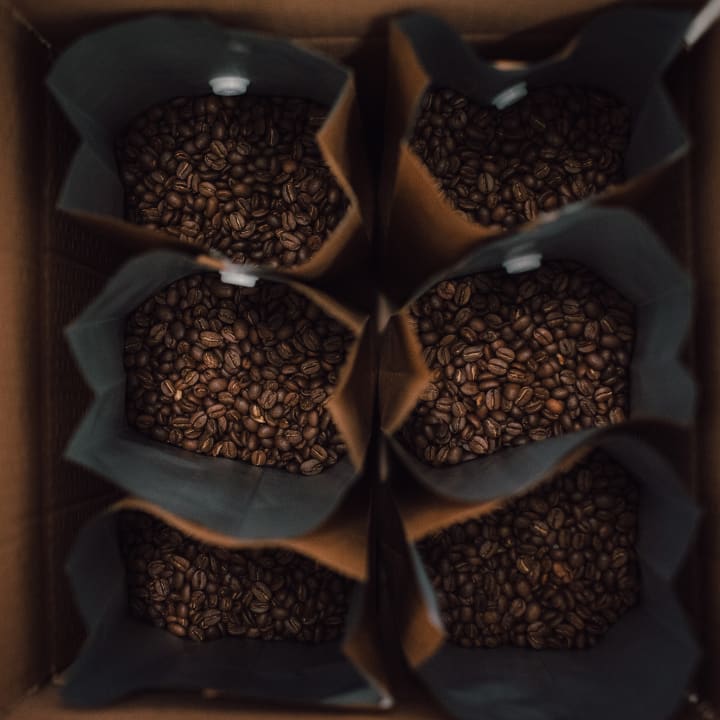
Sustainability and Ethical Considerations: The coffee industry has faced challenges related to sustainability and ethical practices. Issues such as deforestation, low wages for farmers, and exploitation of workers have raised concerns among consumers. To address these concerns, many coffee companies are now focusing on sustainable and ethical practices, such as fair trade certifications, sustainable farming techniques, and environmentally-friendly packaging.
Conclusion: Coffee is more than just a beverage – it is a complex and fascinating world that spans from farm to cup. Understanding the origins and varieties of coffee beans, the challenges of coffee farming and harvesting, the intricacies of processing and roasting, and the various ways to brew and enjoy coffee can deepen one's appreciation for this beloved drink. By considering sustainability and ethical practices within the coffee industry, we can ensure that this journey is a responsible and ethical one for all involved.
About the Creator
Enjoyed the story? Support the Creator.
Subscribe for free to receive all their stories in your feed. You could also pledge your support or give them a one-off tip, letting them know you appreciate their work.





Comments
There are no comments for this story
Be the first to respond and start the conversation.